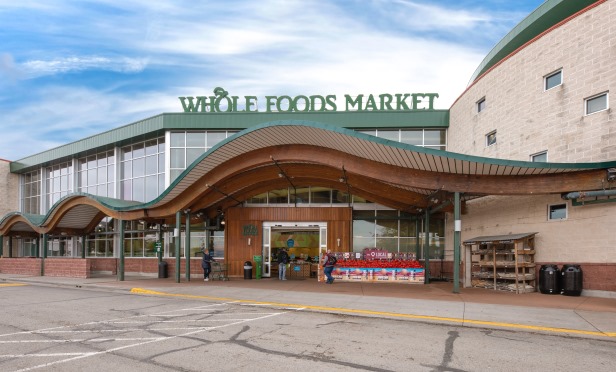 With 200,000 square feet of retail on 13 acres, Preston Forest is home to more than 23 tenants.
With 200,000 square feet of retail on 13 acres, Preston Forest is home to more than 23 tenants.
DALLAS—Preston Forest Shopping Center is located at the highly visible southeast corner of Preston and Forest in the heart of Preston Hollow. With 200,000 square feet of retail spanning approximately 13 acres, the shopping center is home to more than 23 tenants including anchor tenant Whole Foods and other notable tenants such as Staples, Walgreens, JoAnn Fabric and Crafts, Corner Bakery, Velvet Taco and Wells Fargo. The shopping center is currently more than 95% leased.
Stockdale Investment Group, a local family-owned and operated real estate venture, has acquired Preston Forest Shopping Center from Mixon Investment Company Inc. Stockdale will own, manage and lease the property, and looks forward to preserving and enhancing this part of Preston Hollow, said Kenneth Pratt, managing partner at Stockdale Investment Group. He says Stockdale was attracted to the area's growth and longevity.
"What makes this legacy property so significant to us is the prominent Preston Hollow neighborhood location. It is a notable Dallas retail intersection and one of the last big corners left in Dallas for acquisition," Pratt tells GlobeSt.com. "We were also drawn to the property because it hasn't been renovated in some time. This gives us the opportunity to come in, assess what needs to be done and make some truly impactful changes that will help current and future tenants."
Pratt says Stockdale looks forward to being part of the neighborhood for many years to come.
In 1961, the Preston Forest Shopping Center was developed by the Mixon family and quickly became a top shopping destination in Dallas. The property has solely belonged to the Mixon family since its inception and after three generations, the family decided to sell the shopping center.
"We have been following this property for a decade because of its significance as a notable Dallas retail intersection," said Joe Pastora, managing partner at Stockdale Investment Group. "It perfectly matches our core strategy of purchasing legacy properties in irreplaceable locations."
Community centers benefit from a tenant mix transition from soft goods to categories such as restaurants. Restaurant operators are attracted to community retail because those eateries benefit from the Monday-Thursday traffic driven by the grocers, according to a recent Weitzman report.
Today's large community center can have as many as 10 restaurants, compared to at best two a decade ago. In 2018, the community category reported more than 1,700 restaurants, whereas just five years ago, that total was 1,100.
Today, the 481 community centers in Weitzman's database report an average of four restaurants per center. Those restaurants drive a lot of traffic, cross shopping and sales as leasing MVPs.
Want to continue reading?
Become a Free ALM Digital Reader.
Once you are an ALM Digital Member, you’ll receive:
- Breaking commercial real estate news and analysis, on-site and via our newsletters and custom alerts
- Educational webcasts, white papers, and ebooks from industry thought leaders
- Critical coverage of the property casualty insurance and financial advisory markets on our other ALM sites, PropertyCasualty360 and ThinkAdvisor
Already have an account? Sign In Now
*May exclude premium content© 2025 ALM Global, LLC, All Rights Reserved. Request academic re-use from www.copyright.com. All other uses, submit a request to [email protected]. For more information visit Asset & Logo Licensing.








